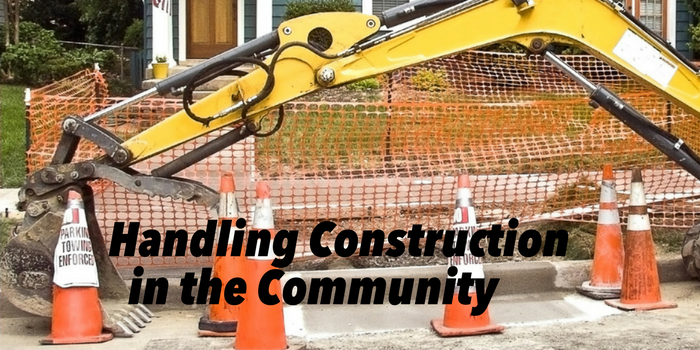Summer is the most popular season for construction work. With lower chances of rain and poor weather conditions, work can be completed with minimum rescheduling. However, despite these quicker completion times, many community construction projects can cause inconveniences to homeowners and create intensive planning and follow-up for board members.
To ease construction difficulties, we have put together a list of steps you can follow to make neighborhood construction as painless as possible:
Notify homeowners of construction plans before contacting vendors.
If you explain the necessity of the project to homeowners before the work begins, they will be better prepared to work with you through the construction period. Additionally, you can use board meetings and email blasts to communicate the ways the project will benefit both the community as a whole and the homeowners as individuals.
Obtain a clear breakdown of the construction schedule.
Construction companies usually provide these materials; however, if needed, your community manager will help you acquire the project schedule, which will give you the dates and times the company will work in particular sections of your community. You can use this schedule to advantageously plan community events and make driving and parking arrangements.
Communicate each step of the project to homeowners.
Project plans can change frequently, depending on extreme heat or other weather conditions. So, sending out email blasts to update the community can prevent a lot of headache – especially if homeowners are required to change their parking arrangements, open their gates, or make any other temporary adjustments. Optimally, these updates should highlight the date, time, and location of the construction work, as well as any task or restriction given to the homeowners in designated areas.
Create a committee to guide homeowners through the construction process.
Assign Lead Homeowners to each section or street of the community to coordinate alternative parking plans, package pick-up, and/or pet sitting (if vendors must be let into backyards). Having a committee member on-site to help oversee temporary changes can lessen homeowner stress and make construction requirements and restrictions easier to handle.
Ensure that detour routes are set up in a timely manner and are clearly labeled.
If traffic is blocked from using a neighborhood entrance, or if some homeowners must take the long way around to reach their homes, setting up detour routes can be helpful. Email blasting a map that highlights detour routes will also help homeowners reach their destinations with little confusion.
Report unsafe conditions as soon as possible.
Tell homeowners to report any potentially dangerous circumstances right away, so these issues can be relayed to the construction company and be corrected. Some correctable situations might include unattended power tools, missing cones/barriers, and unlocked construction fences.
Celebrate your successfully-completed construction project.
Arrange a community event, such as a ribbon-cutting, an opening party, or a car parade, to celebrate newly-completed playgrounds, remodeled clubhouses, renovated pool areas, and resurfaced streets. A fun, creative event will give homeowners (and board members!) something to look forward to once the project is done.
Construction projects can be big commitments and include many responsibilities for everyone in the community. By keeping the pay-off in mind, and by communicating frequently with both homeowners and the construction company, you can turn the chore of overseeing construction into manageable tasks that help prepare for exciting new improvements.
For specific questions about HOA community management, contact Spectrum today!







